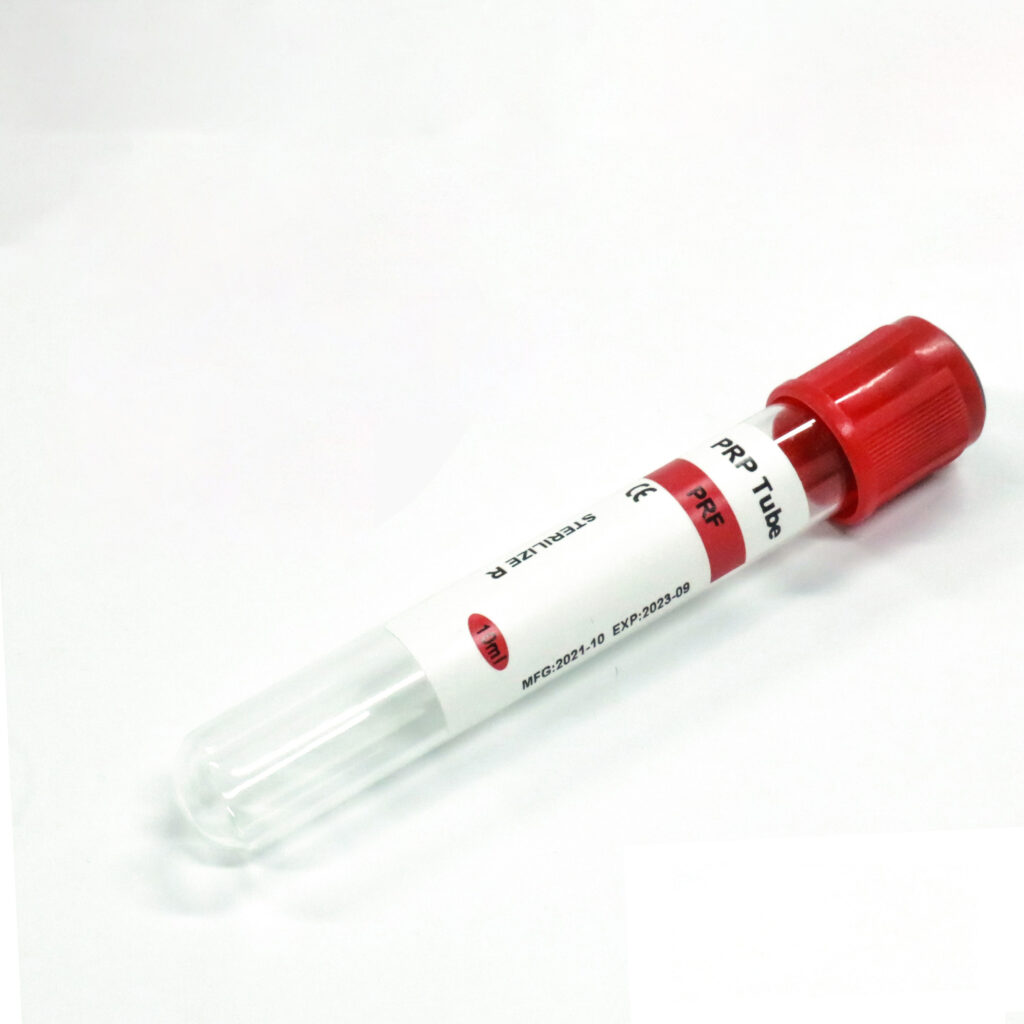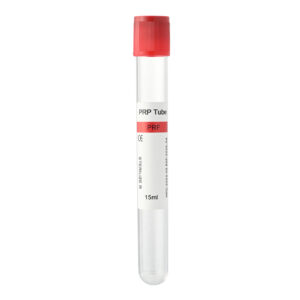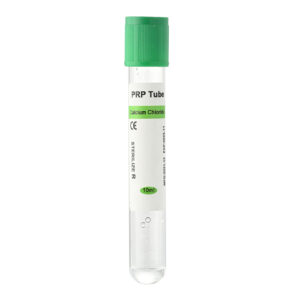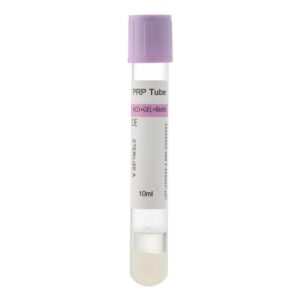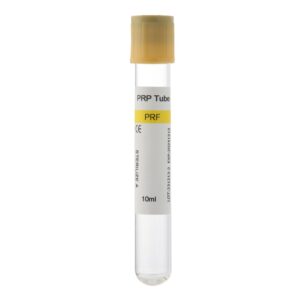What is the difference between PRF and PRP?
Although Platelet-Rich Plasma (PRP) and Platelet-Rich Fibrin share some basic similarities, The main difference makes PRF particularly effective in hair restoration. Studies show that a higher concentration of platelets, along with white blood cells and stem cells, forms a more effective combination. This is what PRF provides.
Blood is spun in a centrifuge at a lower speed so that the blood layers do not separate distinctly. This allows some white blood cells and stem cells to remain in the platelet layer without being separated. This centrifugation method gives PRF more healing factors than PRP. Also, the lower centrifuge speed causes less trauma to the individual cells in the blood. Moreover, after centrifugation, PRF contains about ten times the concentration of platelets compared to normal blood, which is significantly higher than PRP. The higher the concentration, the better the effect.
PRF also contains no additives, whereas PRP production involves using anticoagulants during blood processing. Without anticoagulants, PRF absorbs the body’s natural fibrinogen and converts it into fibrin through thrombin during the early stages of clot formation. This creates a spongy fibrin matrix that activates platelets. The platelets act as a scaffold, keeping growth factors and stem cells at the injection site, and preventing their diffusion, contributing to PRF’s longer-lasting effects.
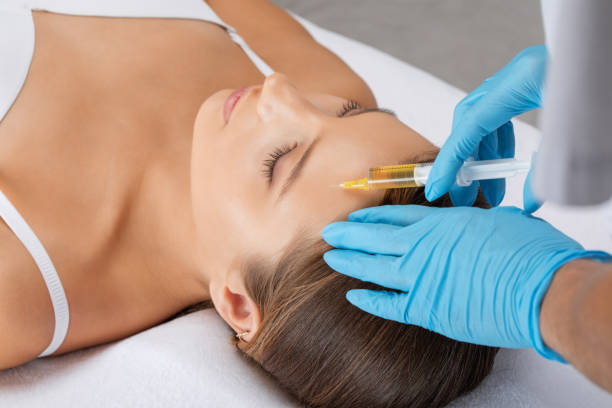
Who is the ideal candidate for PRF treatment for hair loss?
Anyone experiencing hair loss may be eligible for PRF hair restoration. However, the growth factors, white blood cells, stem cells, and platelets in PRF are most effective at awakening dormant hair follicles. These follicles remain healthy and capable of producing hair, but they spend increasingly more time in the dormant phase. The effect of treatment decreases with the increase of time, which is why PRP hair restoration is most effective when patients notice early hair loss. PRP is effective for both men and women, especially those in the early stages of hair loss. It is also highly effective for women suffering from traction alopecia caused by hairstyles that pull on the hair. Additionally, it is a great treatment for those with thinning hair who do not want to take medication regularly.
What are the steps of PRF treatment for hair loss?
- Consultation and Assessment:
- Initial Consultation: Consult with a dermatologist or hair loss treatment specialist to assess the type and severity of hair loss.
- Health Assessment: Check for any health issues affecting the treatment’s outcome.
- Blood Collection:
- Collect Blood Sample: Draw a certain amount of blood from the patient’s vein, usually 10-20 ml.
- Centrifugation:
- Centrifuge Separation: Place the blood sample in a centrifuge to separate the blood components and obtain the platelet-rich fibrin (PRF).
- Extract: Carefully extract the PRF portion after centrifugation.
- Scalp Preparation:
- Clean the Scalp: Clean the scalp with an antibacterial solution to ensure no risk of infection.
- Anesthesia: Use local anesthetics if necessary to reduce discomfort.
- Injection:
- Inject: Use syringe needles to inject PRF into the scalp areas affected by hair loss. The process may involve multiple injections to ensure even distribution of PRF.
- Post-Treatment Care:
- Avoid Washing Hair: Avoid washing the hair for 24 hours after the injection.
- Avoid Irritation: Avoid irritating the scalp, such as exposure to direct sunlight or using harsh shampoos.
- Follow-Up Evaluations: Regular follow-up visits to assess the treatment’s effectiveness and perform supplementary therapies if necessary.
What are the advantages of PRF over other hair loss treatments?
- Natural Healing: PRF leverages the regenerative properties of the body’s blood, making it the preferred choice for hair restoration. This therapy stimulates natural hair growth and improves hair health without external substances.
- Non-Invasive: PRF treatment is a non-invasive process that only requires simple scalp injections. Because there are no incisions or surgical procedures, minimizing associated risks, discomfort, and recovery time. Patients can typically resume normal activities shortly after treatment.
- Minimal Side Effects: PRF treatment is generally well-tolerated with minimal side effects or allergic reactions. Because it uses the patient’s blood components, the risk of adverse reactions or allergies is significantly reduced. There may be minor temporary pain or swelling at the injection site, but these usually subside within a few days.

